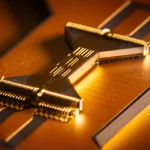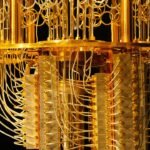Superconductor claims spark investor frenzy, but scientists are skeptical
Last week, two papers authored by South Korean scientists caused a stir on social media and led to a surge in certain stock prices in China and South Korea. The papers claimed a groundbreaking discovery: the identification of a practical superconductor.
Superconductors are materials that can conduct electricity with zero resistance, a property that could revolutionize power grids by minimizing energy loss during transmission and advance fields like computing, where electrical resistance poses a limitation.
The papers were published on a preprint website used by scientists to share research before formal peer review and publication. The claim prompted researchers worldwide, including teams from at least two U.S. national labs and three Chinese universities, to examine the proposed material more closely.
While superconducting materials already exist in applications like MRI machines and quantum computers, they typically only exhibit superconducting properties at extremely low temperatures, making them impractical for widespread use.
However, the South Korean researchers stated that they had discovered a superconductor that operates at room temperature, which has been a long-sought goal in the field.
The material, named LK-99, was created by introducing a small number of copper atoms into a common mineral called lead apatite. Researchers have started replicating the results, and some Chinese universities reported producing versions of LK-99 with varying results.
Verifying the claims is crucial, and experts are closely monitoring efforts to reproduce the findings in reputable labs. The field of superconductors has seen many promising materials initially, but further scrutiny has often revealed flaws, leading to disappointment.
The original papers raised some concerns due to a lack of comprehensive data over a broad temperature range to demonstrate the material’s behavior in both superconducting and non-superconducting states. Some researchers have also pointed out challenges in producing the material in bulk quantities.
Despite the excitement surrounding the potential room-temperature superconductor, there are still important questions to answer, such as the material’s ability to carry electrical current and its potential applications in improving power grids.
Regardless of the outcome, the scientific community recognizes the value of studying such materials, as serendipitous discoveries in common minerals could hold intriguing physics yet to be explored.































